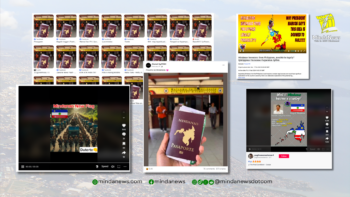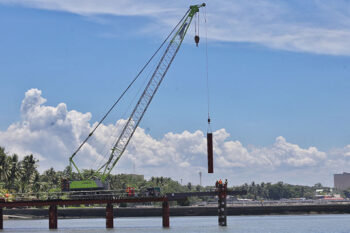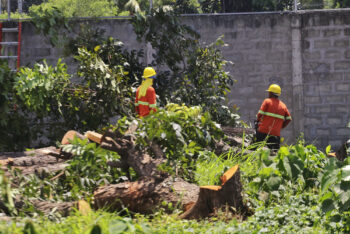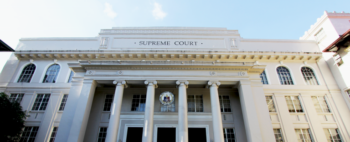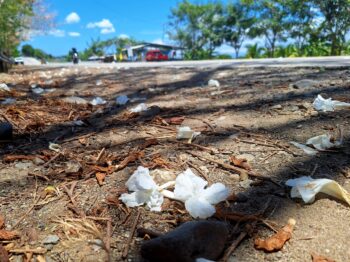BEIJING (MindaNews/17 August) – As a descendant of one of the Chinese immigrants living in the Philippines, going on a trip to China is both exciting trip and a bit of tricky especially since I have considered this country to be a foreign land rather than my ancestral land for quite a long time.
I grew up with my father’s tale on how those Chinese, particularly those coming from the Amoy (now Xiamen City) in southeastern coastal province of Fujian, have gone a long way to escape China’s poverty centuries ago and find new hope in other Asian countries to include the Philippines.
Majority of them, including my great grandparents of the Wee clan, have not bothered or for some reasons have decided not to go back to China.
I would consider that my great grandparents and some of their relatives were the tough ones among other Chinese immigrants. They did not content themselves in finding a living somewhere in Luzon, which is much closer to Taiwan (still considered to be a province of China), but continued instead their journey by sailing across the archipelago southward and landed in the island province of Basilan and eventually migrated to Zamboanga City in Mindanao Island.
At that time China — before the great revolution in mid 20th century– was in contrast to what it is today. It was a scene of political turmoil, civil wars, warlords that controlled the lives of the Chinese, and massive corruption in government that left the majority of the people in despair.
Deep poverty, lack of opportunities, and to some extent the diminishing of hope for a progressive China pushed some of its people to migrate to other countries, the exact situation that the Philippines, particularly Mindanao, is experiencing now. Hundreds thousands of Filipinos every year are heading to foreign lands to look for jobs and opportunities to feed their hungry families back home, and alleviate their living condition.
I have been in China for a little over a month now, and I can say that the old and ugly society that my father described had vanished. With gross domestic product hitting a record level every year, the communist-ruled country is poised to become the world’s largest economy and superpower possibly edging out the United States in the near term.
There are still flaws along the way to reform. China has been seen as notorious in its human rights record, and air pollution is high with 60% of its power provided by coal, considered to be the dirtiest source of energy.
Looking back again, most of the Chinese immigrants in the Philippines that left their country hundreds of years ago had completely assimilated into the Filipino society whether in the field of business or in politics.
The Philippines’ national hero Jose Rizal Mercado was a descendant of a Chinese immigrant named Domingo Lam-co, but they changed their surname to Mercado (“market”) under the pressure of anti-Chinese feelings among the Spanish colonizers. Even the current Philippine President Benigno C. Aquino, III, has Chinese blood running in his veins, through his maternal side.
Chinese immigrants carrying with them the values and traits of entrepreneurial spirit have long had been an influence in Filipino culture. We may notice that some of the Philippines’ successful businessmen have Chinese roots, including the family of mall magnate Henry Sy, who was considered by Time Magazine as one of the families that control Asia.
My grandfather Wee Piaw and his family started doing business in the old Zamboanga public market located at Magay Street near the terminal port. He found his fortune after the Second World War by selling auto parts and machines left by the American troops after defeating the Japanese soldiers.
“Your grandpa was a jack of all trades and finally was a pioneer in the automotive and hardware business in Zamboanga City,” my aunt Virgnia Wee, who has been based in the US, recalls.
The businesses operated by Chinese merchants in Zamboanga City eventually grew and prospered. The indicators are the tall commercial buildings that they have built downtown, on Mayor Climaco Street (formerly known as Guardia National), and on Gov. Lim Avenue. Some of the old edifices are even considered as heritage buildings.
The buildings, including the Wee Piaw Trading Corp.
, could be seen until now. These also include the buildings built by the Wee Sit, Lim, Cheong, and Ang families to name a few.
The businesses of Chinese immigrants that flourished have also evolved. In the past, using the mode of barter trading of basic goods was the top business. But now, we can see third or fourth generations of Filipino-Chinese throughout the Philippines that have ventured into major industries from retail, agribusiness, real estate, banking, airlines, telecommunications, to name a few.
During my tour here, I have seen how many Chinese practice their entrepreneurial skills. You can observe that every household has its own small business. Young kids as young as nine or 10 years old are selling children’s toys or snack foods just outside of their residences.
“Who is the buyer? It seems everyone here is the seller,” Souksakhone Vaenkeo, a journalist from Laos, noted.
It’s a good start to teach the young ones to become economically independent, he realized.
Since it is my first time in China, I must admit that the astonishment I felt is beyond what I had expected. The scenery is majestic; the old city and emerging modern China are both visible. This scene, which I only saw in Kung Fu movies and post cards, is now becoming a reality.
Chinese Buddhist temples which I really admired the most are everywhere. The scent of the joss sticks and herbal medicines engulfs the area too.
In my first attempt to find my remaining ancestors here, I tried looking for people that share my surname. My luck did not come. I asked my Chinese language teacher if she knows anyone which carries Wee as their surname. She advised me that since Mandarin, Hokkien (Fukien), and other Chinese dialects are tonal language, the pronunciation and writing of the word could change and vary from one province to another.
In my research, the surname Wee, along with Uy, Ng, Ong, Huong, Bong, and Wone, were all derived from the root word Wong or Huang in Pin Yin, a mode of writing from Chinese to English. Please see links: http://www.generasian.ca/roots_wong.html
Dr. Edgar Wickberg, who studied the Chinese in the Philippines and Canada, has said that the influence brought about by European occupation in some Asian countries had also completely changed the pronunciation and writing of Wong to accommodate the way the foreigners speak.
“To me, the varying pronunciations of the surname are of particular interest. [For example], ‘Uy’ is pronounced ‘Wee.’ But not spelled that way. When you see ‘Wee,’ the person is probably from Singapore or Malaysia. If it’s ‘Uy’ then they’re from the Philippines,” he explained.
Reading those documents had made me realize that tracing back my ancestors’ footprints is still far from over. China is huge and the population is humungous. But the challenge is compelling. That is my major personal assignment.
To borrow a famous line, “Genealogy is like playing hide-and-seek: They hide… I seek!”


